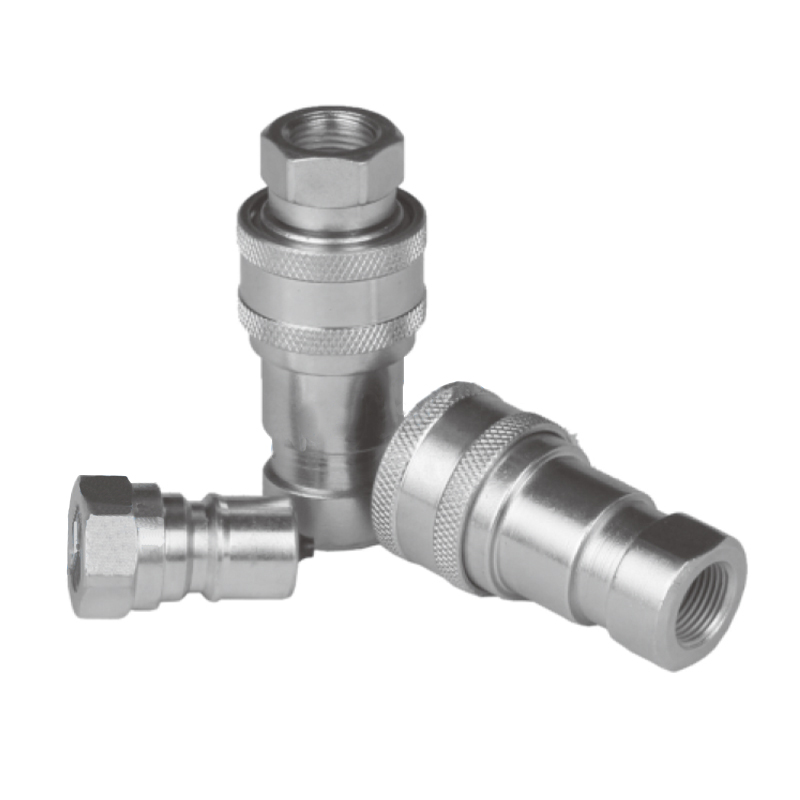Call us
+86-13732136622
+86-15058221666

Select the Right Coupling: Begin by selecting a quick disconnect coupling that meets the specific requirements of your application. Consider factors such as nominal size, pressure rating, material compatibility with the fluids being handled, temperature range, and environmental conditions (such as exposure to chemicals or UV radiation).
Inspect Components: Before installation, conduct a thorough inspection of the quick disconnect coupling and all associated components. Check for any signs of damage, wear, or contamination that could compromise the sealing integrity or functionality of the coupling.
Prepare the Connection Surfaces: Clean and prepare the mating surfaces of both the male and female ends of the coupling system. Remove any debris, burrs, or sharp edges that could impair the sealing surfaces. Ensure surfaces are dry and free from oils, grease, or other contaminants that may interfere with the sealing mechanism.
Apply Lubrication (if recommended): Depending on the type of quick disconnect coupling and manufacturer guidelines, apply a compatible lubricant to the O-rings or sealing surfaces. Lubrication helps facilitate smooth engagement and disengagement of the coupling, reducing wear and ensuring a reliable seal.
Align and Connect: Align the male and female ends of the quick disconnect coupling system carefully. Insert the male end into the female coupling until it seats fully. Ensure proper engagement by pushing or twisting until you feel or hear a positive click, indicating the coupling is securely locked.
Engage Locking Mechanism: If your quick disconnect coupling includes a locking mechanism (such as a ball lock, twist lock, or sleeve mechanism), ensure it is fully engaged according. Proper engagement prevents unintended disconnection during operation, maintaining system integrity and safety.
Perform Pressure Testing (if applicable): Where feasible and safe, conduct a pressure test to verify the integrity of the installed quick disconnect coupling. Gradually apply pressure to the system and monitor for any leaks around the coupling or connection points. Follow recommended test procedures and safety precautions during this process.
Inspect for Leaks: After installation and pressure testing (if applicable), visually inspect the quick disconnect coupling and surrounding area for any signs of leaks. Use a leak detection solution or soapy water applied around the coupling junctions to identify bubbles that indicate escaping fluid. Address any leaks promptly by re-evaluating the connection or replacing damaged components.
Finalize Installation: Once the quick disconnect coupling is securely installed and verified leak-free, finalize the installation by securing any additional support, clamping, or protective measures necessary. Ensure the coupling and associated components are positioned to minimize stress and movement during operation.
GT-B1 Closed double shut-off hydraulic quick couplings


The GT-A1 Closed-type hydraulic quick connector is a type of hydraulic fitting designed to prevent fluid leakage from the hydraulic system. It is comm...
See Details
GT-B1 closed double shut-off hydraulic quick couplings are a type of hydraulic coupling used to connect and disconnect hydraulic lines quickly and eas...
See Details
The KZD steel internal thread medium pressure gas-liquid quick connector is a type of coupling designed to quickly and easily connect or disconnect th...
See Details
● Poppet valves available to prevent uncoupled leakage. ● Poppet valves open automatically when coupled, within rated working pressure, to keep the ...
See Details
● New valve design, it cans resistance damage from high flow and the pressure of impulse that providing advanced performance. ● Machined from solid s...
See Details
The GT-L3 is a type of hydraulic quick coupling that is designed for manual operation. It features a wing nut thread type connection that allows for e...
See Details
● Poppet valves available to prevent uncoupled leakage. ● Poppet valves open automatically when coupled, within rated working pressure, to keep the f...
See Details
Material: Carbon Steel Plating: Trivalent Chromium Temperature Range (Viton): -20℃+180℃ Working Pressure: 100mpa Thread Specification: G1/4 Applica...
See Details
Material: Carbon Steel Plating: Chrome Plated Temperature Range (Nbr): -20°C + 100°C Working Pressure: 70mpa Thread Specification: M10*1.5, M16*1.5 A...
See Details
The GT-MB low-temperature resistance brass quick coupling mould is a type of mold used in the production of brass quick couplings for low-temperature ...
See Details
Contact Us